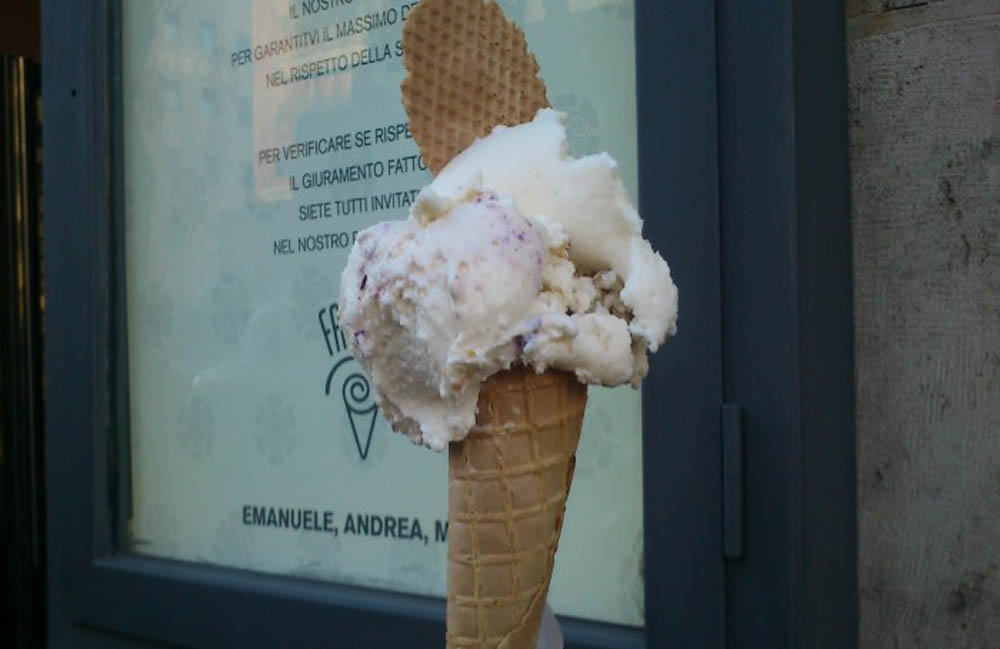“Uno picollo cono stracciatella.” This is the one sentence I know how to say in Italian. It’s not grammatically correct, but I figured that if I say it, the gelato server will give me a glorious cone of my favorite Italian gelato flavor, stracciatella.
The language barrier I’m experiencing abroad, though evident, hasn’t come in the way of me getting by in a foreign country. Before boarding the plane to come here, I didn’t know a lick of Italian. I was excited to see how I’d make my way around the world when I couldn’t understand the language that would be spoken around me. Thankfully, it’s proven to be far less difficult than expected. So far, to get by, all I’ve needed to do is point to things and know a few basic Italian words here and there.
When I go to a restaurant that doesn’t have an English menu, I ask the person next to me to pick a number. I count the items on the menu until I get to the number chosen by whoever I’m sitting with. Whichever menu item I land on is what I order. For me, this is a fun way to be adventurous in my eating endeavors. This method of choosing my meals allows me to try a wide variety of food. The most odd dish that has been brought to me by a server was a plate of five different cheeses. Literally, that was all that was on the plate. Well, that and a decorative carrot on the side.
When ordering gelato, I like to point to the prettiest looking flavor in the display case. The color of the gelato generally gives away the flavor, but you can never be too sure if what you’re ordering is what you want. For instance, I was excited to see banana flavored gelato in my favorite gelateria. It was yellow and labeled “ananas.” Seems promising, right? I knew immediately after the first lick that whatever I ordered wasn’t banana flavored. I learned later on that pineapple in Italian is “ananas.” Whoops.
If I’m ever in need of a restroom, I walk up to people one by one, shrug my arms, and say “bagno” in a questioning tone. This usually causes the stranger I’m talking to to give me a strange look, but at least it gets the point across. Their response, more often than not, comes out in Italian. Thankfully, hand gestures are very much a part of the Italian culture. While they’re explaining to me the rights and lefts of the way to the restroom, their hands accompany them in their directions by pointing out the way. The stereotype that Italians use excessive amounts of hand gestures is all too accurate.
I was alone at a train station earlier this week. The electronic signs that inform passengers of the train arrival times and platform numbers weren’t working. I knew when the train I purchased a ticket for was supposed to arrive, but had no way of knowing which platform I needed to be on. Since I had a bit of buffer room before my train’s arrival time, I walked from platform to platform seeking help from the locals. I walked up to a person on each platform, said “Viterbo,” pointed to the nearest train track, and waited to see their response. Each person I asked on each platform didn’t give me the answer I wanted to hear until I got to the very last platform. After saying “Viterbo” and pointing to the nearest train track, a kind lady smiled at me and said “Si, Viterbo.”
Getting by in a foreign country has been a fun challenge. The language barrier can make situations difficult, but if you try hard enough and talk to the right people, you’ll accomplish the task at hand whether it be ordering food, finding the restroom, or figuring out how to get from one place to the other.
*Student USAC (University Studies Abroad Consortium)




























